Does your pick for Bird of the Year feature in a book? Probably! Today Anushka Perinpanayagam surveys dozens of books featuring Aotearoa’s birds, and finds we are writing about our birds in a huge variety of ways.
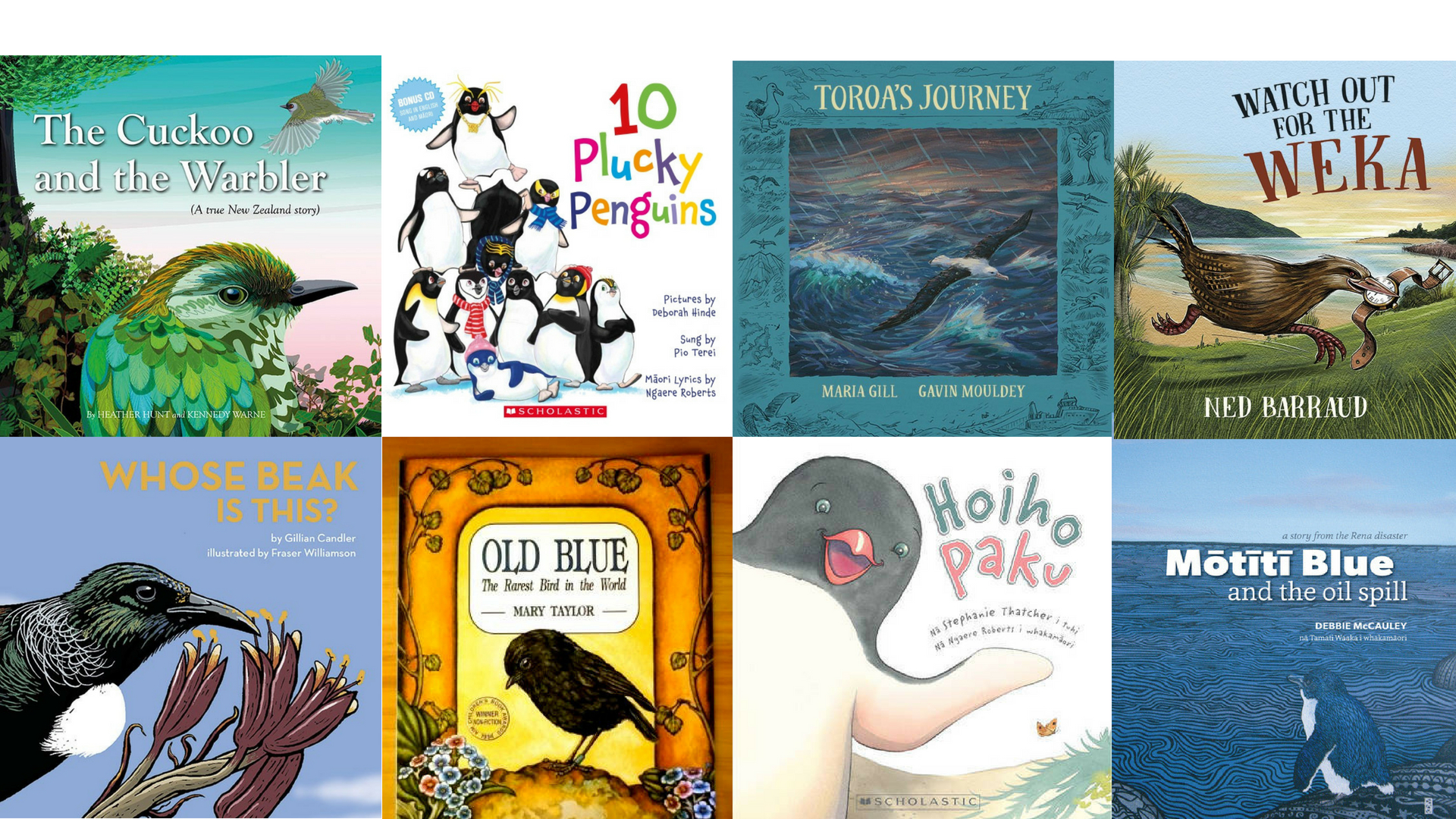
As part of a household of amateur bird watchers, our toddler has become an avid reader of all bird-related books.
She will pore over our well-worn bird watching guides asking: ‘what does the kererū eat?’ and ‘where does the tīeke make its nest?’ And our regular haul from our local library usually includes at least a few picture books featuring native birds.
It is hardly surprising that there is an ever-growing list of picture books featuring our bird fauna. After all, our birds are strikingly unusual. Not only can a number of endemic species be found on our isles, but we can also proudly claim that Aotearoa is home to:
the world’s only bird with a beak that is bent sideways
the world’s smallest penguin
the world’s only bird to have nostrils at the end of its beak
the world’s largest seabirds
the world’s only flightless parrot and
birds that make the longest non-stop migratory flights in the world
(Can you name them all?)
A number of distinctive traits also characterise our birds. Aotearoa has an unusual number of:
flightless birds
long-lived birds (did you know that kākāpō can live to 90?)
birds with slow breeding rates and
birds with small clutch sizes.
Many of these features have made them vulnerable to predation from introduced species.
Our birds offer rich material for children’s books: unique characteristics for us to learn about, enjoy and celebrate; environmental challenges to be explored and vibrant characters for tales set in Aotearoa.
My list of children’s bird books is by no means exhaustive – instead, it is organised around some categories relating to the focus and purpose of some favourite bird books. In some instances, these categories overlap – books that highlight environmental concerns might also celebrate the sounds and movement of our birds; nonetheless, I think we can meaningfully make these distinctions, highlighting the different ways in which children’s authors are writing about our birdlife.
(I haven’t included any books about kiwi, but you can see Thalia’s recent list for The Sapling for some of the best books about our national bird.)
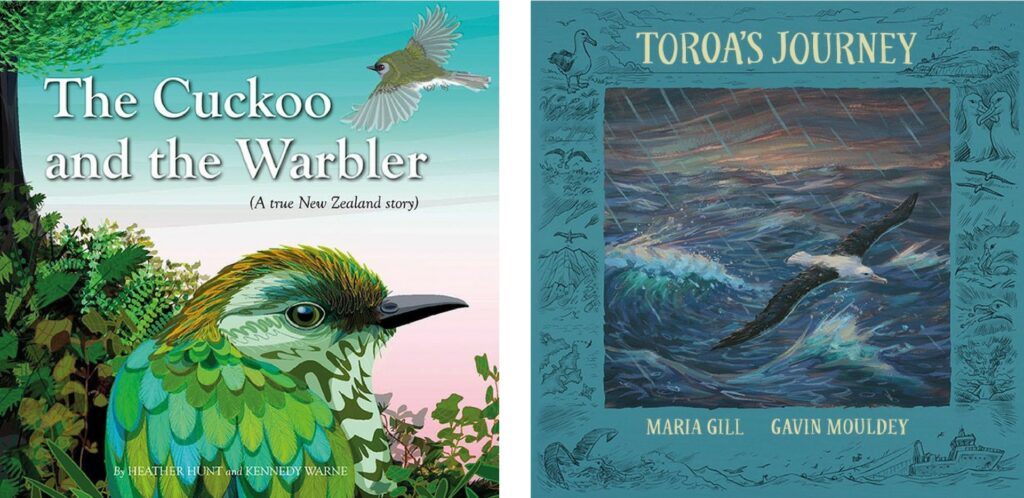
Books that celebrate the characteristics of our birds
These books bring us to a place of wonder, inspiring us to learn more. Some do this by imparting fascinating information about our birds.
The Cuckoo and the Warbler, by Heather Hunt and Kennedy Warne (Potton & Burton), explores the special bond between two species – ‘Tuia, tui, tuia. Bind us together’ – while also showing us how very different they are too.
Toroa’s Journey, by Maria Gill, illustrated by Gavin Mouldey (Potton & Burton), also focuses on distinctive characteristics, this time of a single species. This is a beautifully laid out book. The main text, relaying the story of a single toroa who carries a transmitter, sits alongside related information displayed in blue boxes. The two types of text present a complete picture of this amazing bird and its long journey.
Godwit’s Journey, by Sandra Morris (Raupo), tells us about another migratory species. It leaves the reader marvelling at the godwit’s migratory flight from New Zealand to the Alaskan tundra. In contrast, Anne Hunter’s One Little Fantail (Scholastic) covers a range of bird species. Written in carefully crafted verse, and illustrated by Dave Gunson, it is an informative book that departs from the traditional style of non-fiction writing.
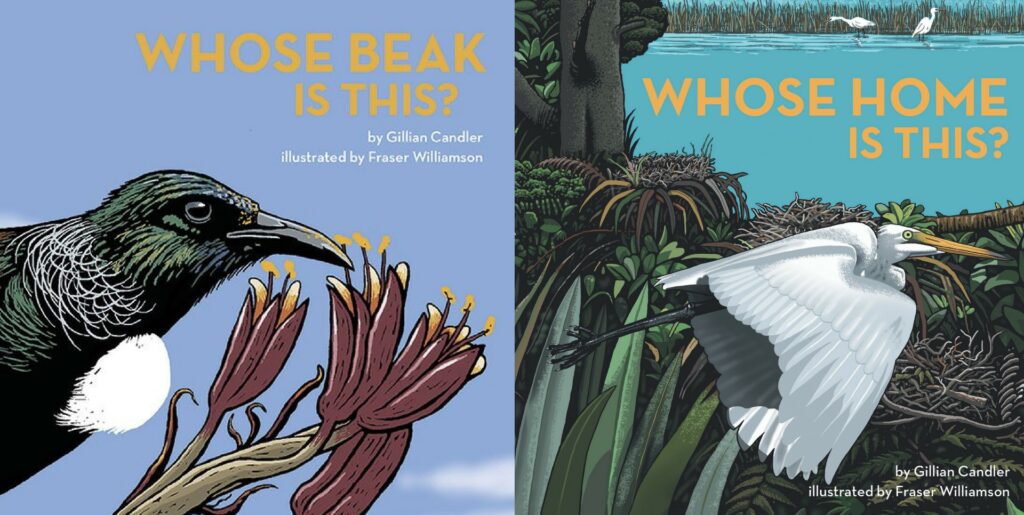
Whose Beak is This? by Gillian Candler, illustrated by Fraser Williamson (Potton & Burton), also showcases a number of species. It provides a fascinating selection of information about just the beaks of these species – I was amazed at how much there was to learn about their beaks alone and just how diverse beaks (and birds) can be.
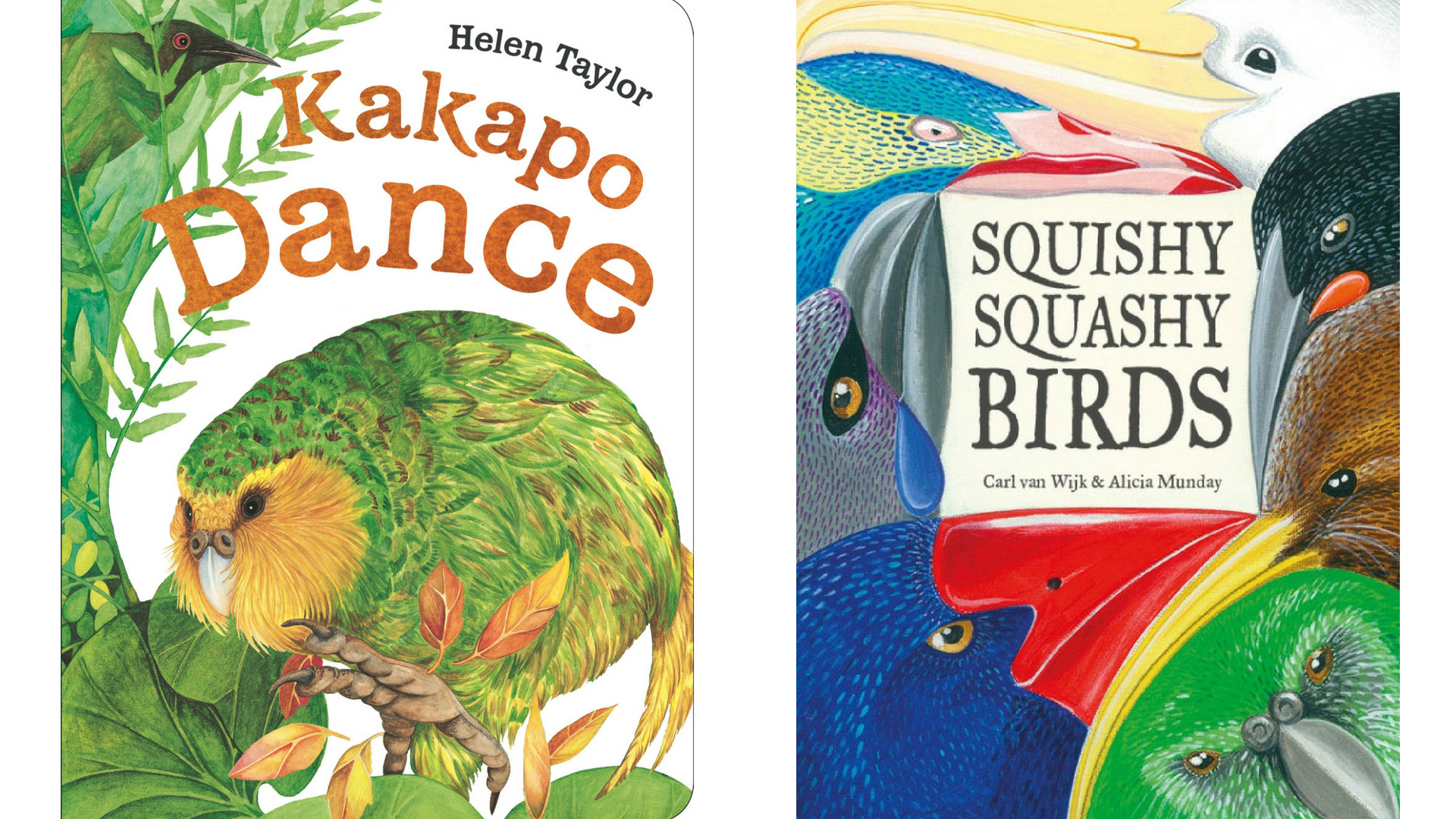
Other books tell stories that revel in the sounds, habits and movements of our birdlife; these books often have a joyful and celebratory flavour.
With a dance-inducing rhythm, Kākāpō Dance, by Helen Taylor (Penguin) fits this category, offering a fun selection of words to describe the dance and song of our native birds. Squishy Squashy Birds, by Carl Van Wijk and Alicia Munday (Potton & Burton), is a favourite with our toddler. All the native birds squashed in Sammy’s Endangered Birds book are glad to burst forth at show and tell. This rhythmic and eye-catching book draws our attention to each bird and its movements and sounds.
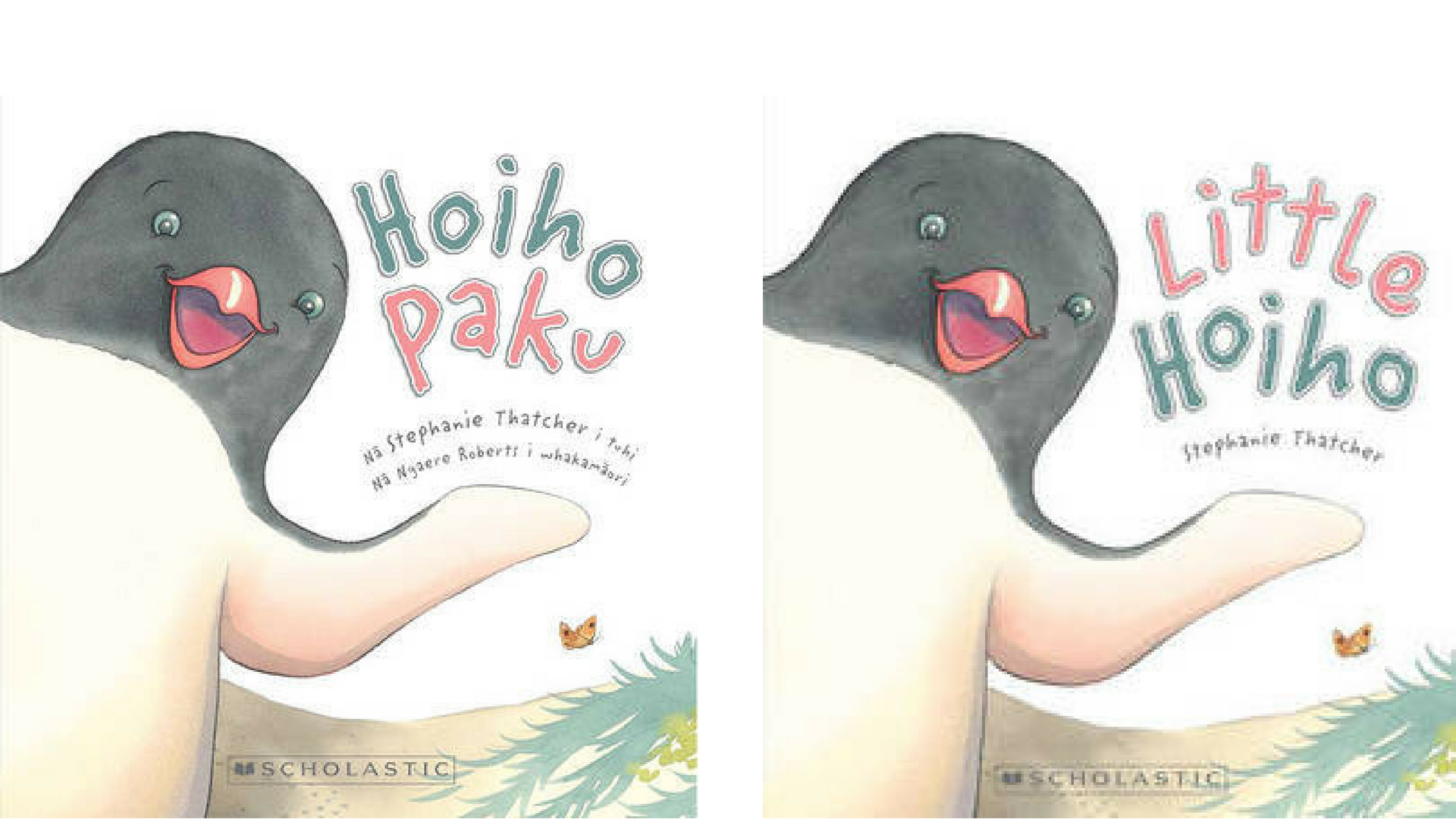
Some other books celebrating specific birds and their movements and sounds include Stephanie Thatcher’s Little Hoiho (Scholastic) and The Indigo Bird, by Helen Taylor (Penguin).
Ned Barraud’s Watch out for the Weka (Potton & Burton) celebrates the cheeky character of weka and their thieving nature, while Tui: A Nest in the Bush by Meg Lipscombe (Potton & Burton) is a photo diary of a tūī’s nest and her growing chicks.
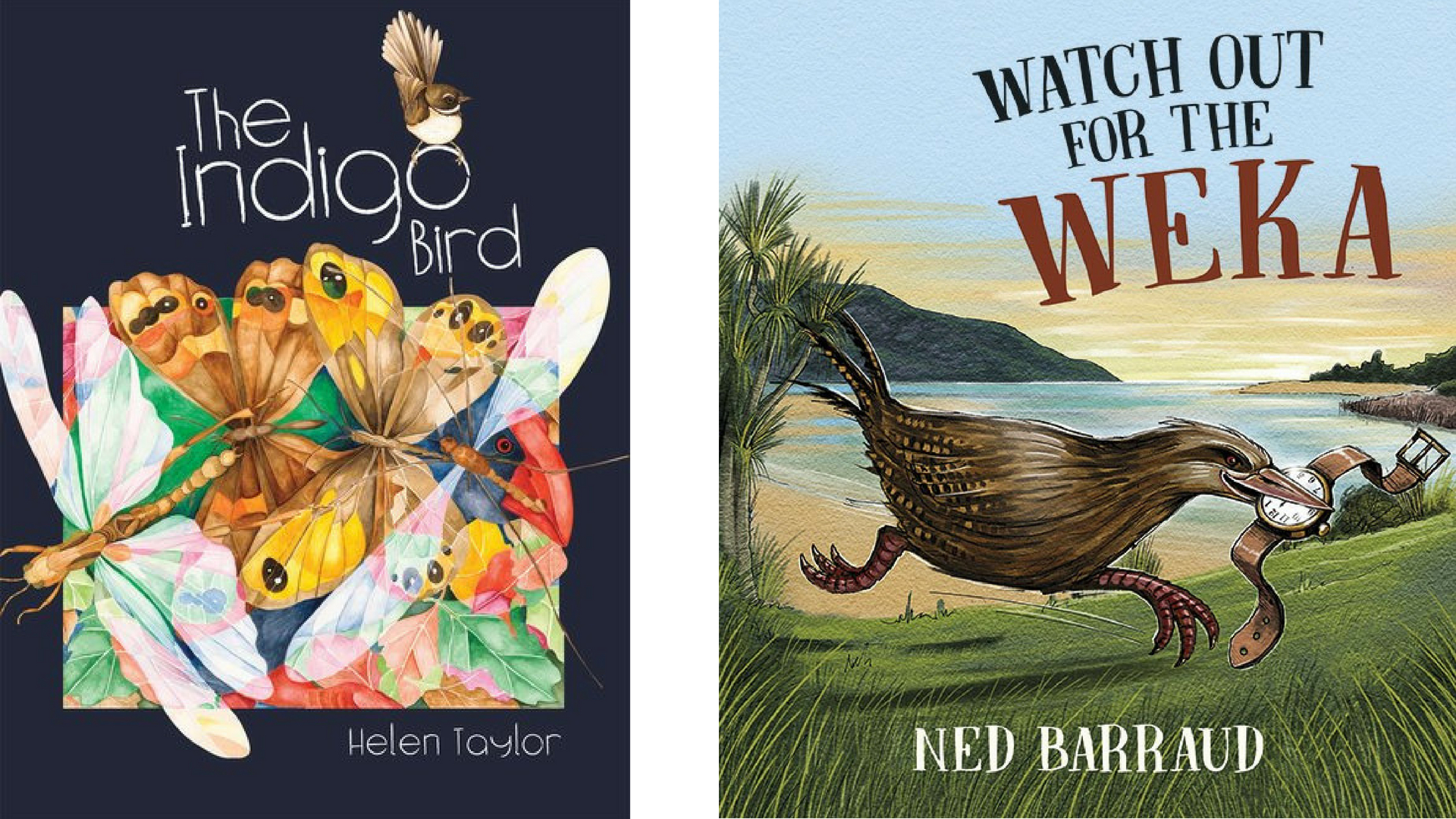
Ria, the Reckless Wrybill, by Jane Buxton, illustrated by Jenny Cooper (Puffin) celebrates the wrybill and it unusual beak through a fun story (with some environmental implications) about Ria, a bold wrybill chick whose beak bends to the left, rather than the right.
Maraea and the Albatrosses, by Patricia Grace, illustrated by Brian Gunson (Puffin) is a sad but beautiful story that captivated our toddler with its images of a community that lives alongside the albatrosses. Slowly the community disperses and only Maraea is left to welcome the albatrosses on their return and to watch over the baby albatrosses as they grow.
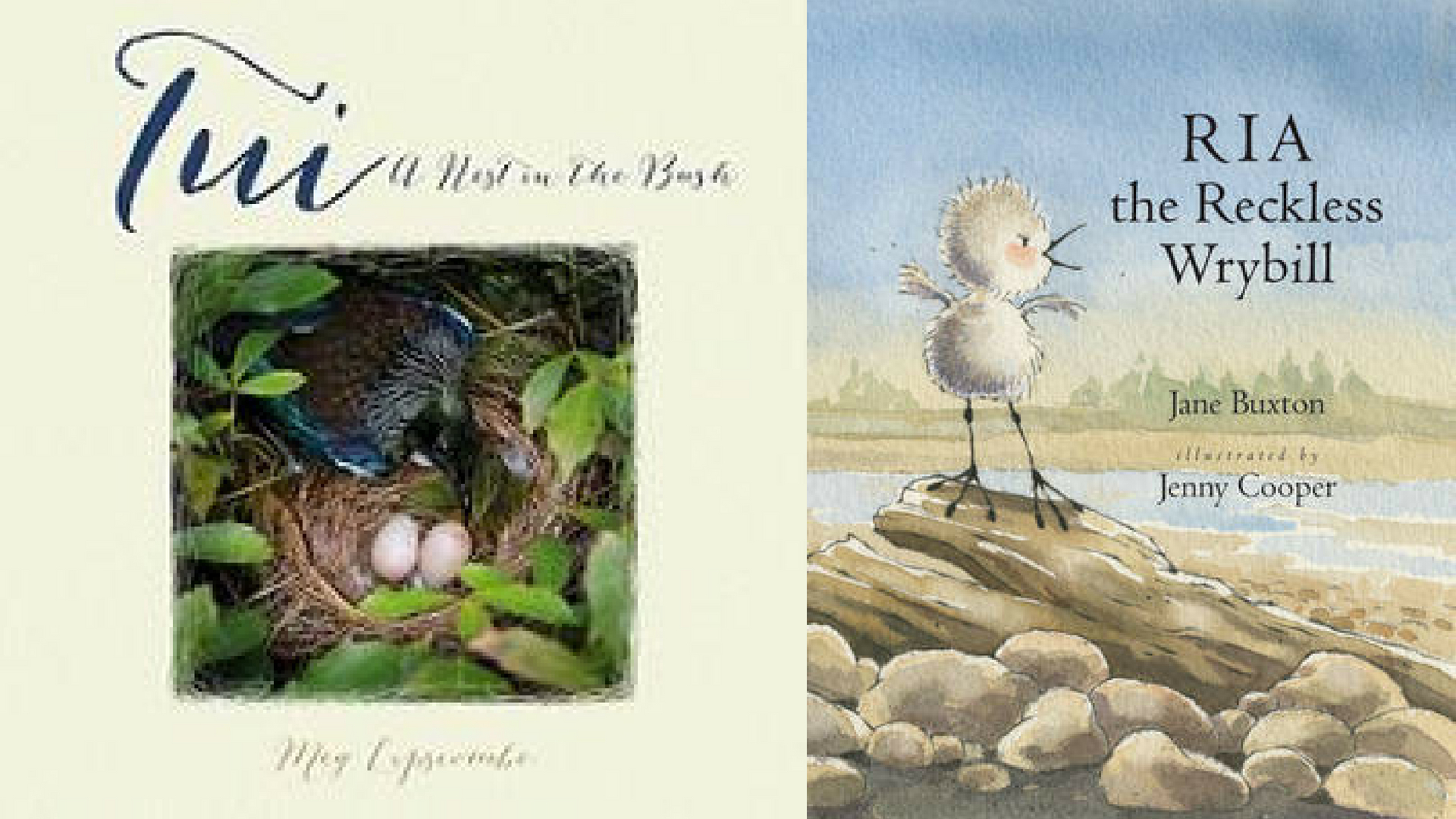
Books with environmental messages or implications
There are books that provoke thought, asking us to consider the threats to our birdlife and calling us to action. Among the books that tell true stories of efforts to save and protect a particular species, Tamanui: The Brave Kokako of Taranaki, by Rebecca Beyer and Linley Wellington, illustrated by Andrew Burdan (Huia), is a favourite in our household. It tells the moving and true tale of Tamanui, the last known surviving kōkako in his Taranaki forest.
Similarly, Old Blue: The Rarest Bird in the World, by Mary Taylor (Scholastic) also focuses on a specific bird and its role in saving its species. The story is quite extraordinary and Taylor’s narrative highlights this well:
‘Robins usually stay with the same mate all their lives, but for some strange reason Old Blue decided to pair with a new mate… “It’s almost as if she understands,” they whispered to each other. “As if she knows.”‘
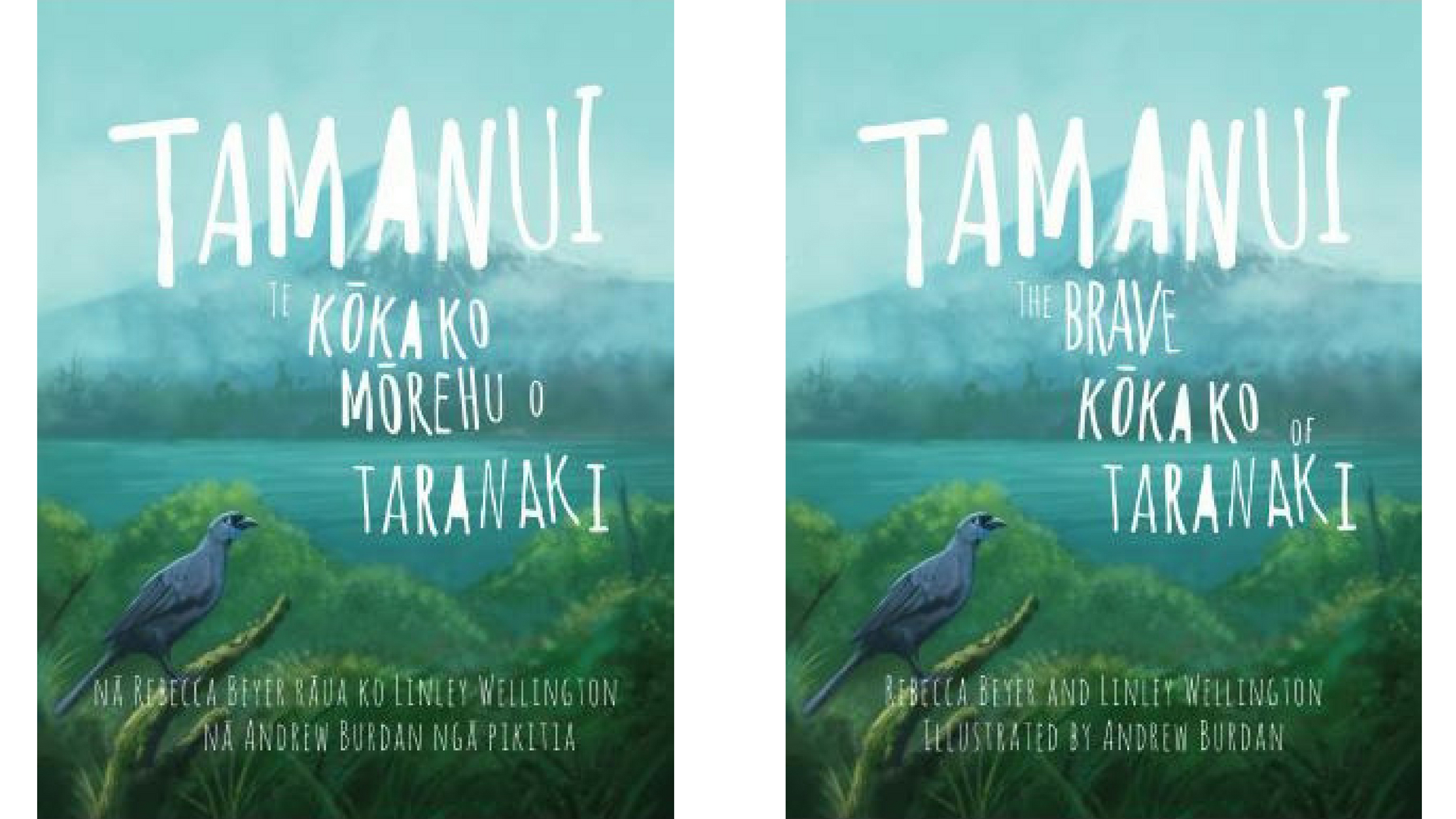
In contrast, Elwyn’s Dream: saving the Takahe, by Ali Foster, illustrated by Viv Walker (Random House) focuses on an individual’s contribution to saving a species. Mōtītī Blue and the Oil Spill: A Story from the Rena Disaster (by Debbie McCauley) focuses on a particular disaster, its impact on birdlife, particularly Mōtītī blue penguins and the efforts to save and rehabilitate affected birds.
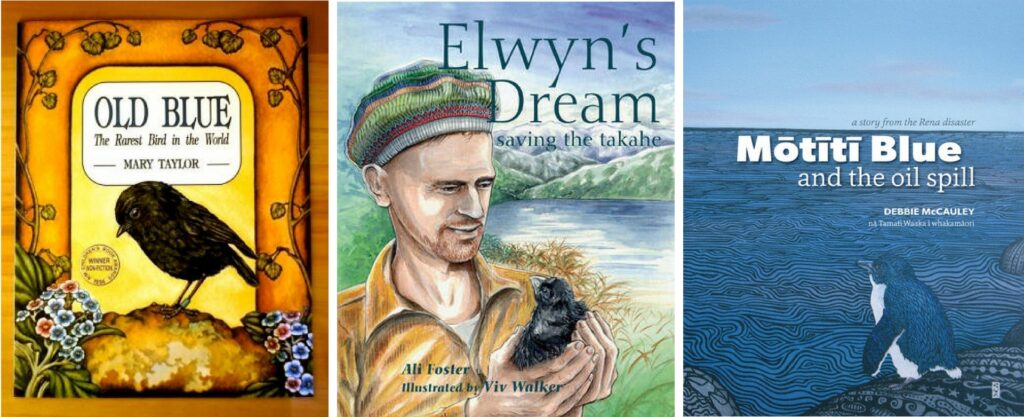
Other books tell stories that encourage and empower readers to take action and make the bush a safer place for our birdlife. For example, The Dawn, by Mike Davey (Reed), tells the empowering story of a young boy who works to eradicate predators from his local bush, predators that deplete birds’ food sources, destroy their nests, eat their eggs and, of course, kill the birds themselves.
Whetu, the Little Blue Duck (by Jennifer Beck) introduces us to the challenges of a baby blue duck as he grows. At every stage of his development he encounters threats from pollution and predators. His call ‘whio, whio’ rescues a lost tramper who names him Whetu. When she learns that mining is to commence near Whetu’s river, she and her friends campaign to save the whio that live there.

The final two books in this category are quite different in style and content but similar in that they employ a less explicit, but nonetheless effective angle on environmental concerns. The Fantail’s Quilt, by Gay Hay and Margaret Tolland (Page Break) written in poetic prose, brings our attention to the difficulties that fantails face in keeping their clutch of eggs safe from introduced predators. It encourages us to reflect on the environmental implications and the dangers introduced species pose to our birdlife.
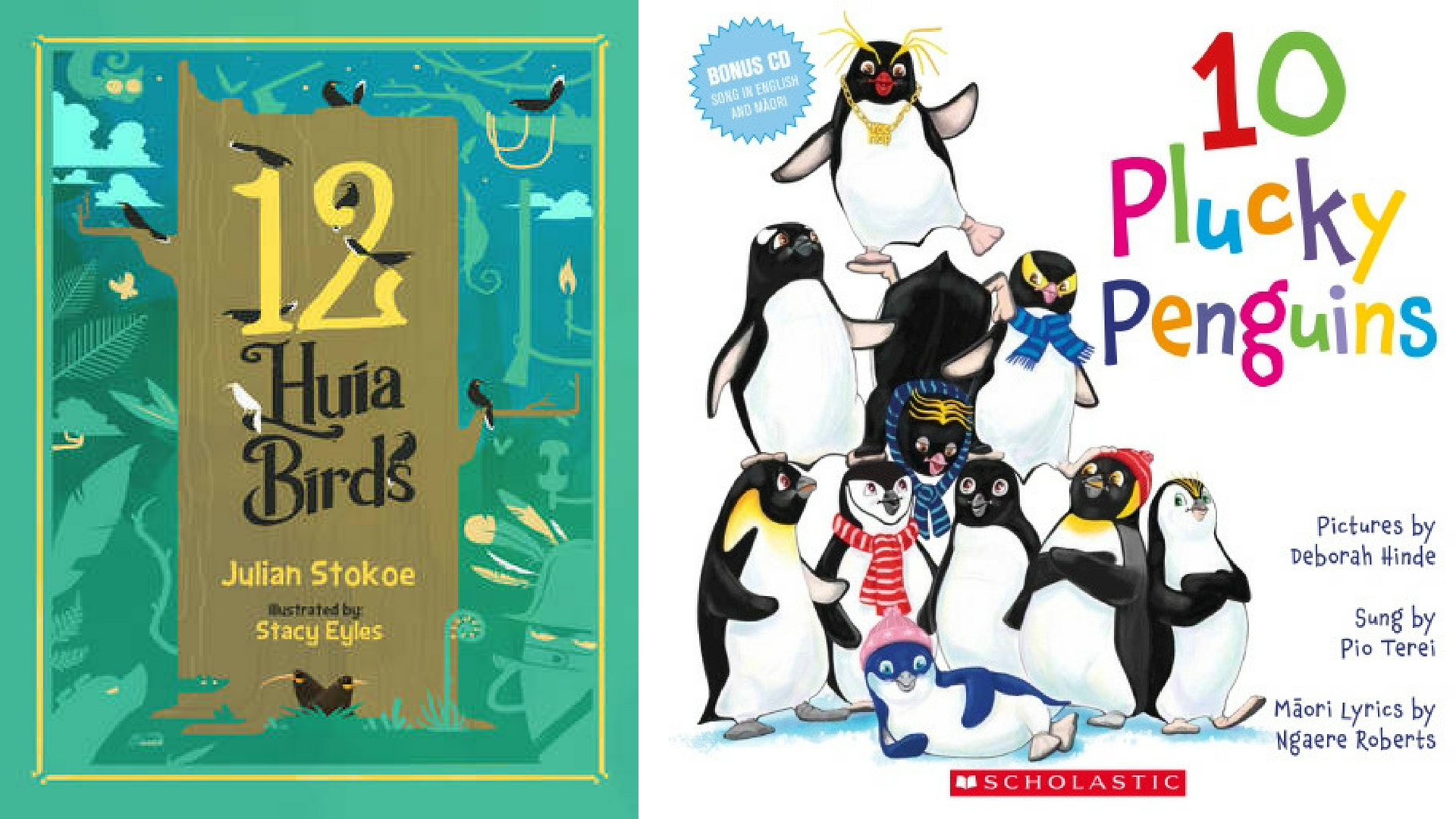
12 Huia Birds, by Julian Stokoe, illustrated by Stacy Eyles (Oratia), provides a thorough history, written in rhyme, of the huia bird and its gradual decline to extinction. Covering a number of historical events, the book has an implicit caveat and comparison: do our birds continue to face the same threats which led to the huia’s extinction? What other birds might also suffer the huia’s fate?
Bird books that aren’t really about the birds
There are a great many books where our birds feature as main characters in a distinctively New Zealand setting. They are less about the birds themselves and more about telling a story that is relevant and familiar to New Zealand readers.
I encountered many books in this category where the storyline and characters are weak and we are left wondering if the native bird could have just as easily been a non-native bird or even a cat or dog. However, some like Nanny Mihi and the Bellbird, by Melanie Drewery, illustrated by Tracy Duncan (Oratia), The Thief of Colours, by Ben Brown and Helen Taylor, (Raupo) and Weka’s Waiata, by Nikki Slade Robinson (David Ling), tell excellent home-grown stories that normalise our birdlife within children’s books.
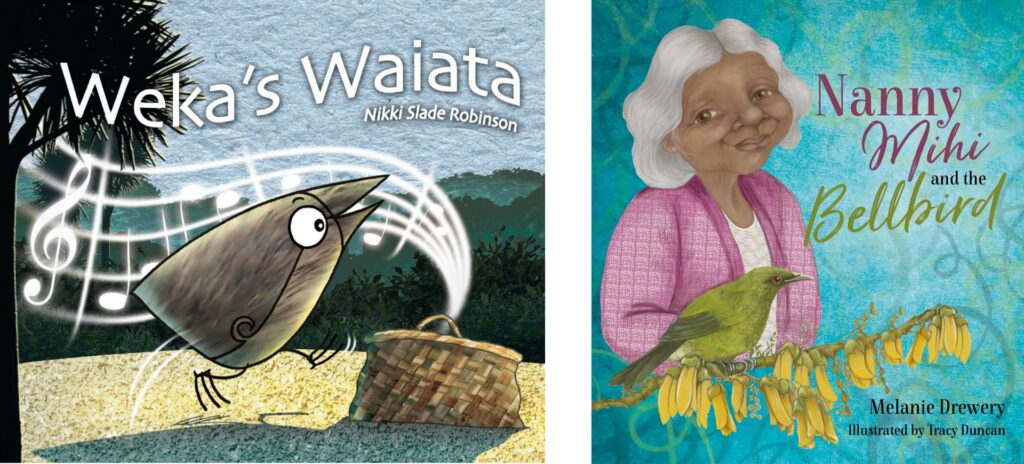
In some cases, the text within these books might not even distinguish the birds as being native ones. 10 Plucky Penguins sung by Pio Terei, illustrated by Deborah Hinde, Māori lyrics by Ngaere Roberts (Scholastic), is particularly noteworthy.
Set to the tune of 10 Green Bottles and with an accompanying CD, there is nothing in the lyrics to indicate the penguins in this book are native ones. However, the illustrations depict the nine varieties of penguins that breed in New Zealand and the region of Antarctica that New Zealand administers.
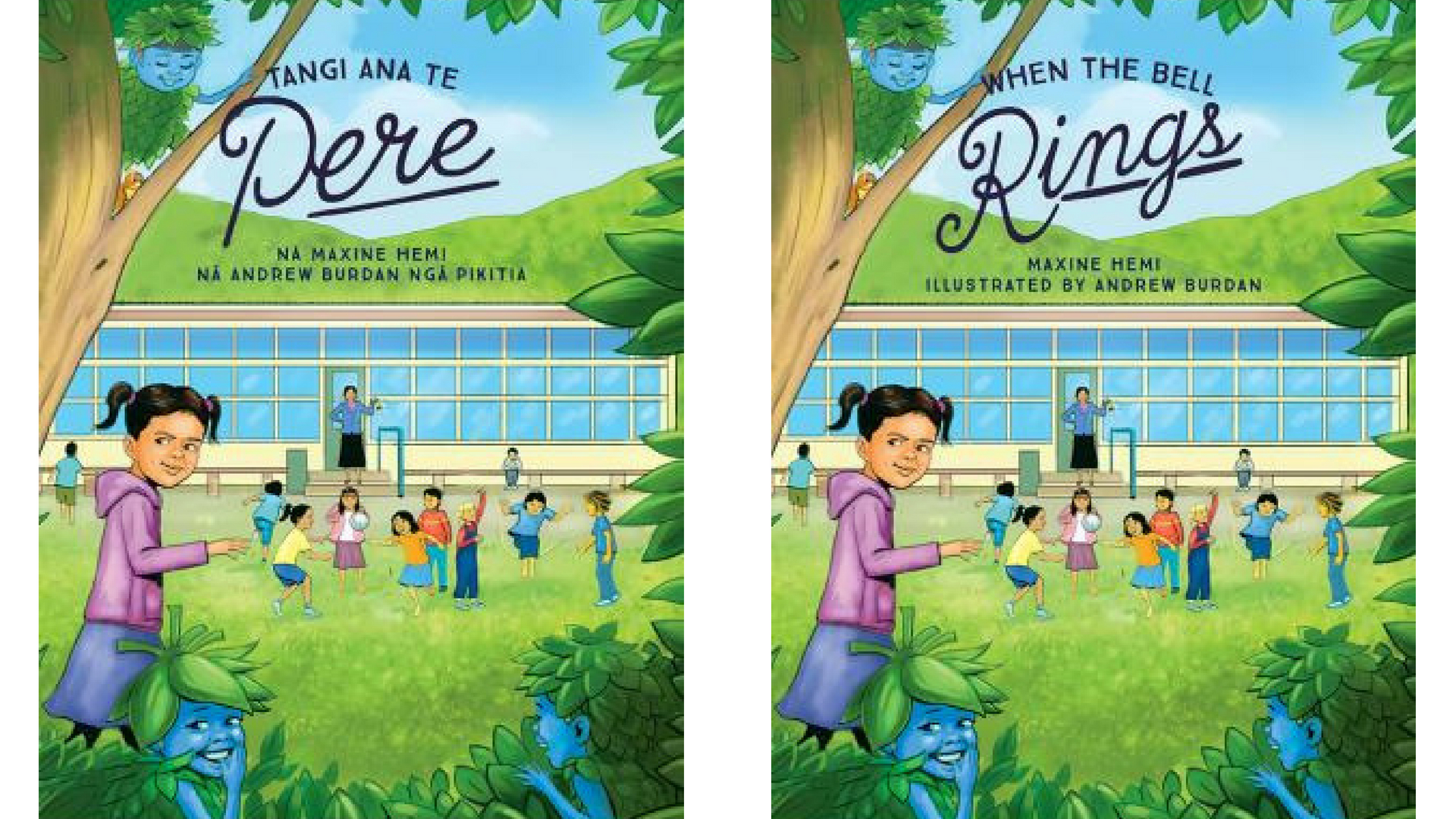
Tangi ana te Pere/When the Bell Rings, by Maxine Hemi, illustrated by Andrew Burdan (Huia), is another example. A fantail is a main character, however, he is never mentioned in the text. In this book, the text and pictures partner in a lively way, both having an equal role in outlining the story.
With so many books on our native birdlife, there is a book for everyone!
Did you know that voting for Bird of the Year, Te Manu Rongonui o te Tau, closes this weekend? Which bird will you choose? And does it have a book?
Anushka Perinpanayagam
Anushka Perinpanayagam lives in Wellington. She and her family can often be seen out-and-about sporting a large bag of children's books which get read in all manner of places! She also believes a cup of tea is the perfect accompaniment to most of life's pleasures - especially reading, writing and spending time with treasured people. She has recently begun a blog of letters to her daughter.



